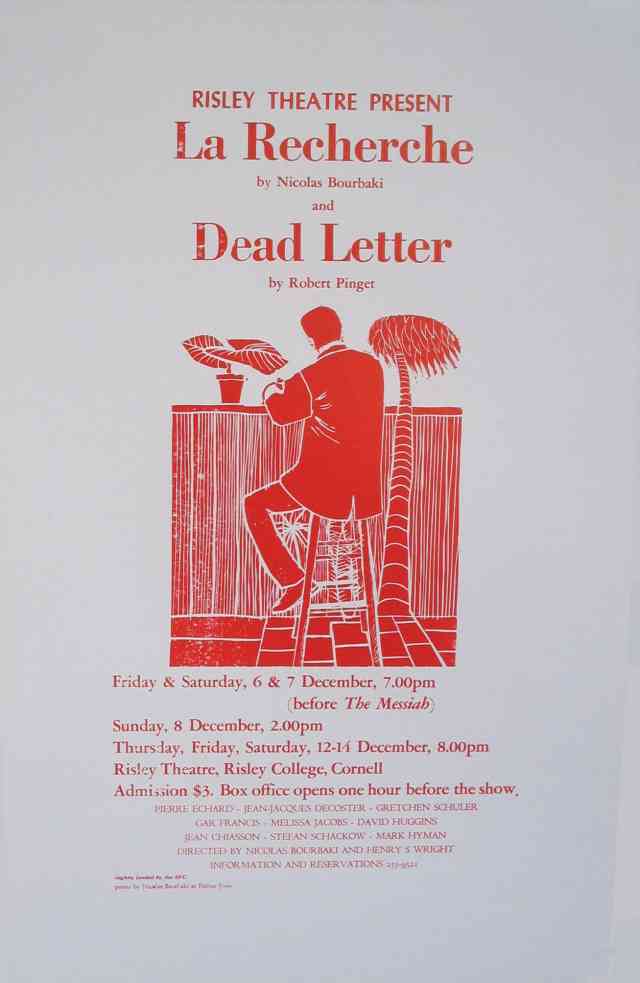
My research, teaching, and other creative work in science and the arts have focused on how the human mind represents perceptual experience, and the ways in which it imposes narrative order on these perceptual representations. I began pursuing the link between science and the arts by writing a book about symbol manipulation in mathematical computer science and in modern literature, and then produced a novel about entropy, determinism, and abstraction. Both of these are out of print, and perhaps best left that way: they're very much self-absorbed, and in retrospect it's clear that just needed to get them out of my system. My perspective on the arts, and on creative effort in general, was a lot different when I was 21 years old and needed everything to happen immediately.
Later on, I took a couple of years off from science to study for an MFA in fiction at Sarah Lawrence College, just north of New York City. Whilst there, I began work on a new novel about science, scientists, and desperation for order and control. It's called Watershed and I finished about half of it before experimental science called me back and began eating up all my time and energy again. Since then, I've had to be content with shorter stuff. As a postdoctoral scholar I found time to publish a couple of essays: Human, but More So, in which I manage to discuss both Anglo-Saxon poetry and autistic neurophysiology without breaking stride, and The Yellow Raincoat, which is about the boundary between self and other and therefore also, in its own way, about autism.
These things have roots. Here is a a short story about motion that I wrote when I was a recent graduate — it's a bit muddled, but so was I at the time. It was when I was a postgraduate that my ideas on autism began to gel, as evidenced in this personal essay which I wrote whilst trying to sort out why I was in graduate school. (If you've been a postgraduate student, you know exactly what I mean.) I also wrote reviews occasionally in the now-defunct Boston Book Review, The Washington Times, and The Washington Post.
Aside from my fiction, I've written plays, a couple of which have achieved local recognition and production. The first of these was La recherche, a bilingual play about scientists combing the Amazon for a prized butterfly, and trying to ignore the anarchy with which nature surrounded them. La recherche was awarded an honourable mention in the 1990 Heermans-McCalmon playwriting competition at Cornell, and was produced in December 1991 at Risley Theatre. Shortly after I started graduate school I wrote No Problems, a full-length play about two men, one young and angry, one old and bitter, who are desperate to escape America as they speed through the European rail system. In 2003 I picked up this script again and revised it. It was recognised as the best non-student submission in the 2004 Other Prize competition, judged by Paul Sirett of the Royal Shakespeare Company. An abridged version received a staged reading at the ADC Theatre in Cambridge on 23 May 2003, and a full production was mounted at Risley Theatre at Cornell University on 9-10 February 2007.
When I've had time and access to a studio, I've done letterpress printing and paper marbling. (Although letterpress in Europe, the UK and North America long ago was suuplanted by the less labourious and also less artful process of offset printing, one of the many differences on which I've remarked in India is that letterpress remains a common method for printing everything from broadsides to shopping bags.) Here is some of my old letterpress work:
